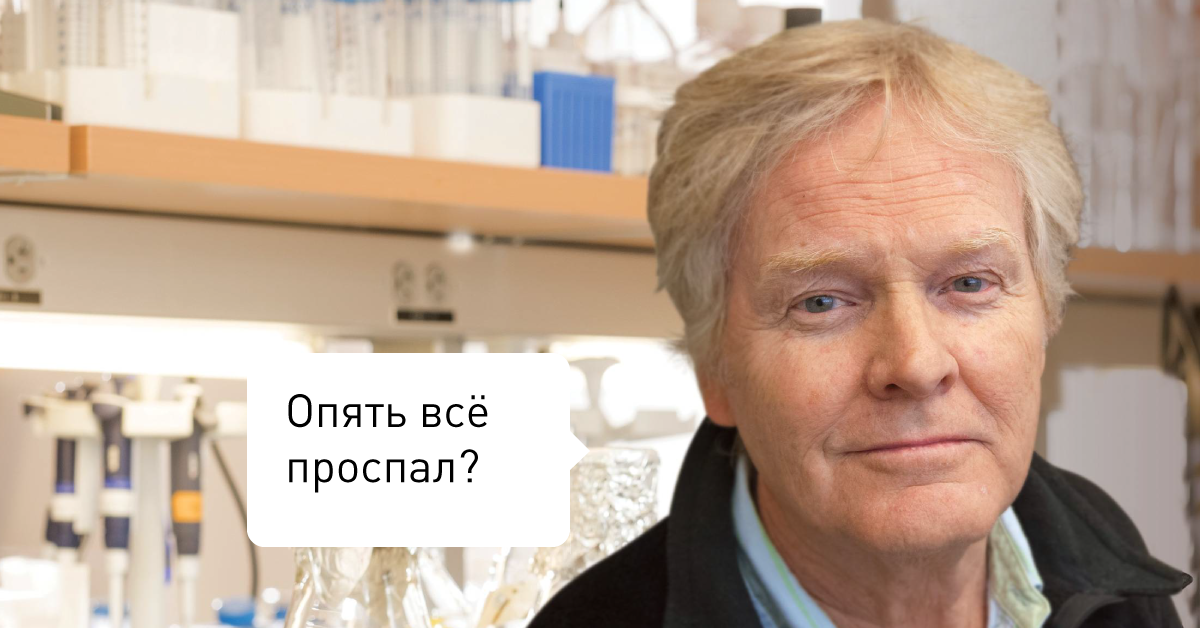Nobel Prize in Medicine was given for the study of circadian rhythms
The Nobel Prize in Physiology and Medicine was announced today. They were American biologists Jeffrey Hall, Michael Rosbash and Michael Young. They received an award for a collective study of the molecular mechanisms regulating circadian rhythms. The atlas tells how they work and why it matters.

These are cycles of sleep and wakefulness, which are associated with the daily rotation of the Earth. Over millions of years of evolution, organisms have adapted themselves to it differently: someone wakes up at dawn, someone goes to bed. The rhythms are preserved in isolation from the sunlight: if the flowers are put in a dark place, they will still open at dawn and wilt towards the night.
')
The human biological clock during the day controls the processes in the body, determines the level of efficiency and physical activity. For 24 hours, body temperature, metabolism, and the concentration of certain hormones change.

According to how time of activity and recession during the day is distributed, people are conditionally divided into three chronotypes. These are the famous "larks", "owls" and "pigeons". "Larks" easily get up early in the morning and are active in the morning. “Owls” independently wake up late, at 9–10 in the morning; their activity peaks occur in the evening and at night. "Pigeons" - an intermediate type between the "larks" and "owls."
Another manifestation of the biological clock is the jetlags after long flights and abrupt change of time zones, when the body continues to go to bed and rise after the old time, and attempts to fall asleep “as expected” do not bring results.
Disruption of circadian rhythms can lead to insomnia, increases the risk of obesity and depression.
Using fruit flies as a model organism, American scientists identified a gene that maintains a normal daily rhythm. He was called PER (period). It encodes a protein that accumulates in the cells during the night, and then cleaves during the day.
As long as the PER protein is in the cell, it blocks its own synthesis and thus triggers a cyclical reaction. Everything is great - but how does PER initially end up in a cage?
The answer to this question was also found. Scientists have found that there are other proteins that are involved in the regulation of circadian rhythms. One of them was called TIM (timeless) - it encodes a protein that binds to TIM and helps it get into cells. Another gene, DBT (doubletime), encodes a protein that delays the accumulation of the PER protein.
Understanding the principles of circadian rhythms will help regulate sleep, nutrition, metabolism and improve the quality of life.

What are circadian rhythms
These are cycles of sleep and wakefulness, which are associated with the daily rotation of the Earth. Over millions of years of evolution, organisms have adapted themselves to it differently: someone wakes up at dawn, someone goes to bed. The rhythms are preserved in isolation from the sunlight: if the flowers are put in a dark place, they will still open at dawn and wilt towards the night.
')
How circadian rhythms manifest
The human biological clock during the day controls the processes in the body, determines the level of efficiency and physical activity. For 24 hours, body temperature, metabolism, and the concentration of certain hormones change.

According to how time of activity and recession during the day is distributed, people are conditionally divided into three chronotypes. These are the famous "larks", "owls" and "pigeons". "Larks" easily get up early in the morning and are active in the morning. “Owls” independently wake up late, at 9–10 in the morning; their activity peaks occur in the evening and at night. "Pigeons" - an intermediate type between the "larks" and "owls."
Another manifestation of the biological clock is the jetlags after long flights and abrupt change of time zones, when the body continues to go to bed and rise after the old time, and attempts to fall asleep “as expected” do not bring results.
Disruption of circadian rhythms can lead to insomnia, increases the risk of obesity and depression.
What scientists have discovered
Using fruit flies as a model organism, American scientists identified a gene that maintains a normal daily rhythm. He was called PER (period). It encodes a protein that accumulates in the cells during the night, and then cleaves during the day.
As long as the PER protein is in the cell, it blocks its own synthesis and thus triggers a cyclical reaction. Everything is great - but how does PER initially end up in a cage?
The answer to this question was also found. Scientists have found that there are other proteins that are involved in the regulation of circadian rhythms. One of them was called TIM (timeless) - it encodes a protein that binds to TIM and helps it get into cells. Another gene, DBT (doubletime), encodes a protein that delays the accumulation of the PER protein.
Understanding the principles of circadian rhythms will help regulate sleep, nutrition, metabolism and improve the quality of life.
Source: https://habr.com/ru/post/373861/
All Articles